Coney Island has opened its doors for another year! Astroland and Deno’s Wonder Wheel Parks are officially open on Weekends until June 8th and then everyday starting June 15th – September 3rd. I kicked off my vacation last week with a little night shoot with some friends down at Coney Island, where there seemed to be more dogs then humans at around 11pm on a Thursday night…
In other news:
I’ll be celebrating World Wide Pinhole Day at Coney Island this Sunday the 27th! If anyone wants to join in some pinhole fun come meet us at 2pm at Nathan’s Hot Dog Stand. We will be the ones with the boxes and tripods.
Seizing the Moments of Time: The Art of Long Exposures is a class I will be teaching at the
B&H Events Space on Wednesday May 14th. The talk will focus on the vision and creativity of Pinhole and Night photography.
Hope to see you somewhere along the road…
Category: Night
Renwick Smallpox Hospital
Posted on — 13 Comments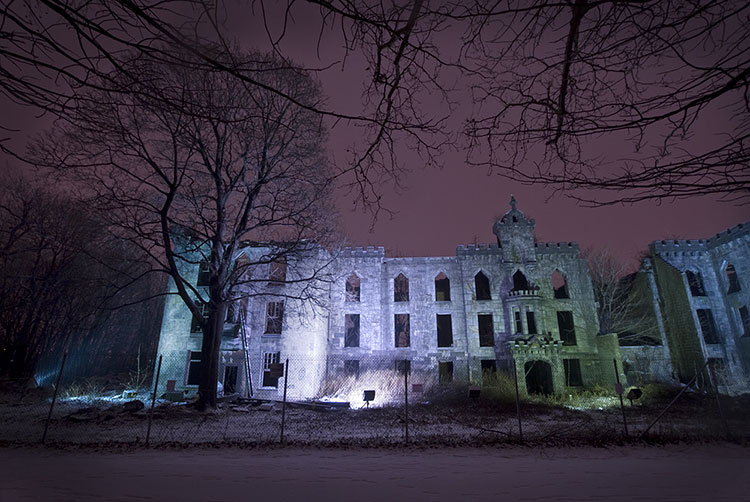 |
 |
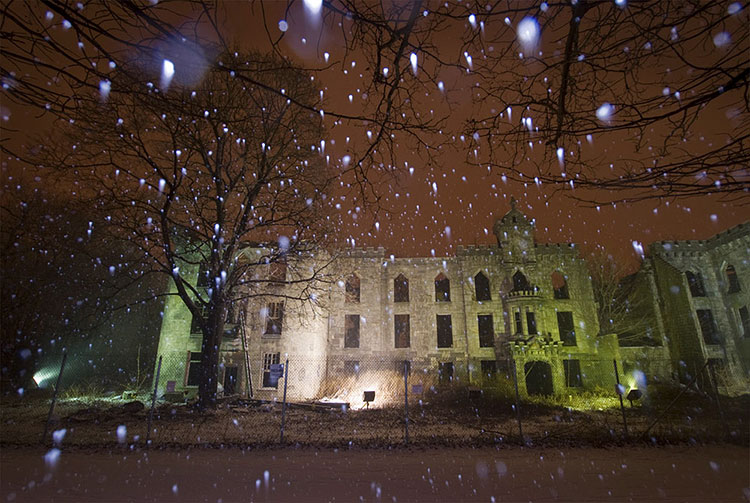 |
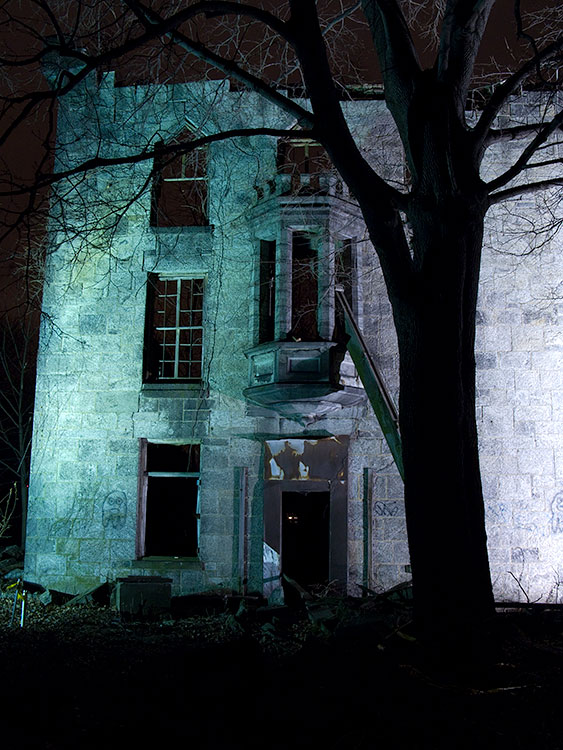 |
 |
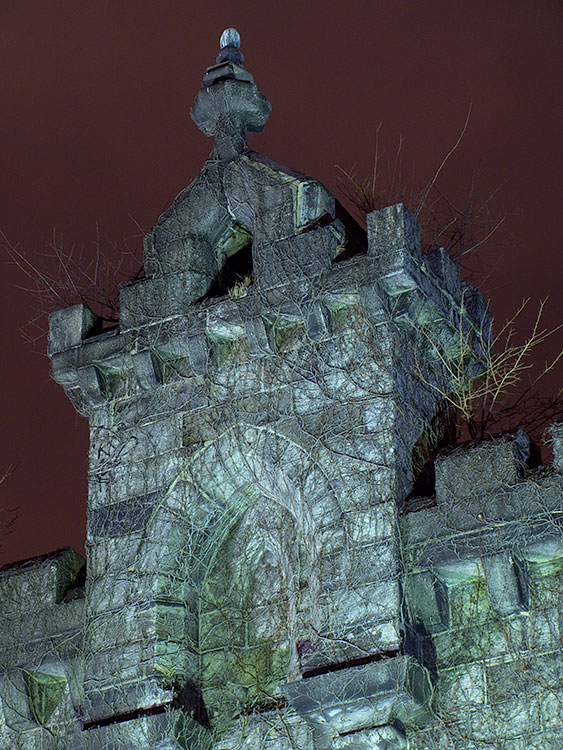 |
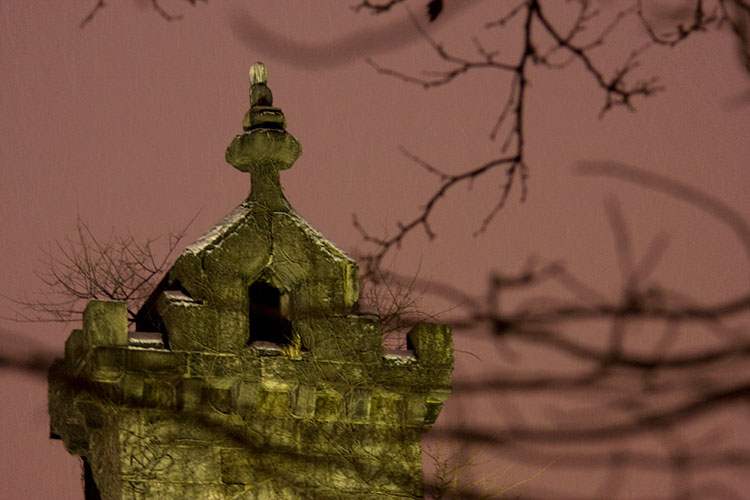 |
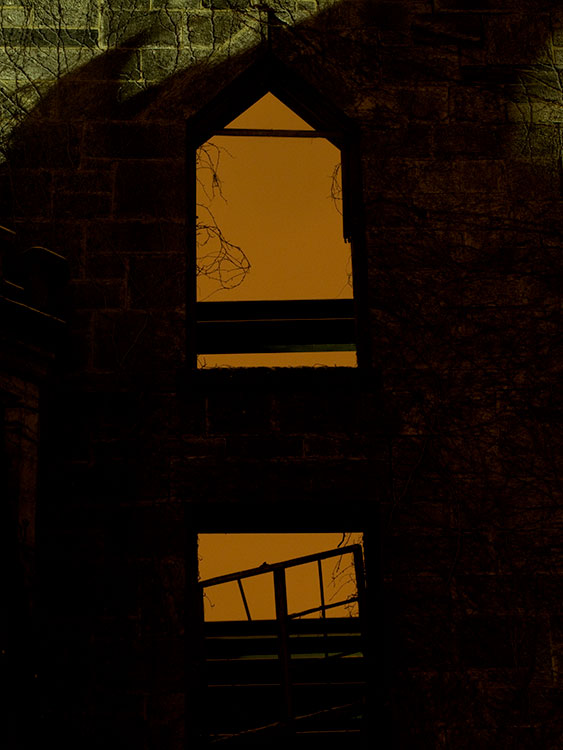 |
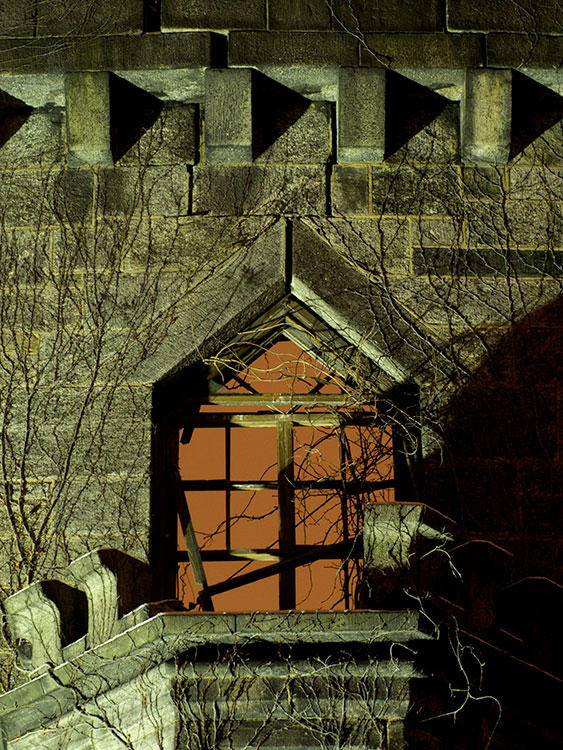 |
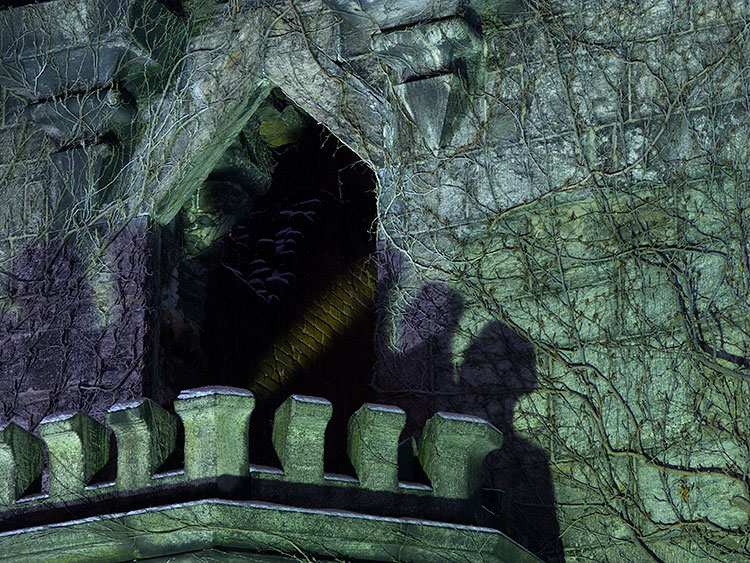 |
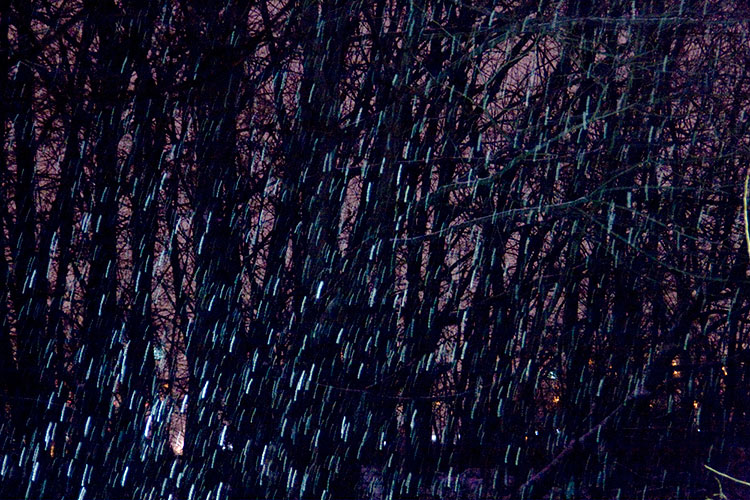 |
The year is 1856.
You are huddled with hundreds of sick people on a ferry along the East river.
The distant foghorn blasts 3 times and as you push yourself closer to the edge of the boat, the mist begins to lift and reveal land and a castle…
People are there to greet you, people and crates.
Actually those aren’t crates, they are coffins, they are definitely occupied and there are hundreds of them.
This was the scene at the Renwick Smallpox Hospital, which was located at the southern tip of Blackwell Island, halfway between Manhattan and Queens.
Designed by the architectural genius, James Renwick Jr., the hospital was built for the modest sum of $35,000 from 1854-6. Of course, it’s easy to keep your overhead low when you have free labor from the island’s prison population and a quarry of gray gneiss at your doorstep.
James Renwick Jr. entered Columbia at the ripe age of 12, and was a major player in the Gothic revival period. His first commission was New York’s Grace Episcopal Church and he continued his amazing career by designing St Patrick’s Cathedral, Corcoran Gallery of Art, and the Smithsonian Institutional Building among others.
The Renwick Smallpox Hospital was the first in the nation to accept patients with this plague or other contagious diseases like scarlet fever, measles, and typhus. It was built to hold a few dozen patients, but from the beginning it was severely overcrowded. Records indicate that it treated 3000-4000 patients in the 1850’s and over 6,000 during the 1860’s. If you were rich and sick, $1 a day would get you onto the top two floors. If you were poor, you were relegated to the first two floors, where several patients would be assigned to one bed in truly appalling conditions. $5 extra a week got you marginally better food, but the percentage of people to walk out Renwick’s doors cured was barely over 60%.
The Renwick Hospital became known as Deadhouse and The Pest House because of the thousands of coffins it ushered out its doors. Even though there was a cure for smallpox in the early 1800’s, it was expensive and 1 out of 100 would die from the vaccine itself. George Washington survived the smallpox disease, and Lincoln battled a mild case 2 days after giving the Gettysburg address.
Over time, and with the decline of this disease, the hospital was expanded and turned into a very respectful nurse’s training facility. However, Renwick’s Hospital was feeling the weight of its years and was seriously antiquated by the 1950’s and starting to crumble in the 60’s. In those years there were very few preservationist groups and few landmarked buildings, but by the 1970’s the Renwick Smallpox Hospital was officially declared a Landmark.
An anonymous donor in 1993 had floodlights installed to cast an eerie evening glow onto the facade of the Hospital. Spectacular views of “Manhattan’s Castle” can be seen at night driving along East side river or flying into LaGuardia Airport.
Since moving here in 2001, I have been fascinated with this building and have tried to shoot it. However, walls and barbed wire fences have been most prohibitive. In late January 2008, a good friend and fellow pinholer, Tom Persinger suggested a Smallpox Hospital Photo Shoot. His father lives on the the former Blackwell Island, now called Roosevelt Island, and said the southern tip was quite accessible. The State is currently in the process of a $12.9 million ‘Phase One’ project to stabilize the Renwick ruins and build a public park and have already landscaped pathways at the southern end of the Island. This project is trying to be sped up due to the collapse of Renwick’s north wall on December 26 of 2007.
So Tom and I ventured out on a cold afternoon with the talented Holga and Zone plate phenom, Erin Malone. There’s a chain-link fence surrounding the Smallpox Hospital and I, of course, quickly found a not so legal way around it. Not much was left inside the Hospital but piles of bricks and plenty of trees. The facade, the framework, was really all that remained. I was having some technical difficulties shooting that day and vowed to come back…at night.
I went on a scouting mission on February 6th, 2008 to see if it was even accessible at night. The sun was setting by the time I arrived at 5:30pm. The main gate to the southern tip of the island was over 10′ tall and had barbed wire, but it was open. With tripod and my new Canon G9 in hand I quickly rushed down the 60+ yards to the Hospital. I didn’t want to break in at night, I just chose to shoot through the fence and test the exposures. The floodlights were bathing the Hospital in what seemed like white light but my camera was reading as eerie shades of blue and green.
An hour later I was still shooting when the cop car drove up beside me, “We closing up bossman” said the driver.
What? Bossman? I wasn’t being arrested?
Technically, I wasn’t trespassing.
I asked the cop what time they shut down the park to which he replied, “Around sunset, or when it starts to get dangerous.”
“Dangerous?!” I replied, “Well, thanks for the warning.” and started to walk back towards the gate.
Unfortunately the gate was now closed and locked.
Uhmmm… I definitely was assessing the situation and it didn’t look good. But then the cop car came back around from doing his loop and thankfully unlocked the gate.
The next week I returned with my fellow Nocturnalist, Andre Costantini, who was featured previously here with our Red Hook Night shoot.
As luck would have it, February 12th, 2008, was one of the few days in which it snowed in the city. Did that deter Andre and me? Hell no! We arrived at 5pm, set up, and witnessed an amazing sunset through the snow clouded night. It was truly spectacular, and the images featured here are the best of both or our work from that evening.
(Click on each of the photographs above to see the artist and larger image size and details.)
It truly was a great shoot under the aura of this ancient castle. Of course the same cop, Ray, came to get us at 7pm, “We are closing up bossman.” he said again from the police car. Because I knew the drill and it was cold outside, I asked Ray if he could give us a lift to the train station which was a 5 minutes drive away. “Come on in, did you get some good shots tonight?” Ray asked as Andre and I jumped into the cop car and headed home.
(Historic information regarding this blog was taken from several of Jami Bernard’s articles from Roosevelt Island’s Independent newspaper, Main St WIRE and from the Roosevelt Island Historic Society.)
The Holy Grail of Photography, Darkness Darkness, and 20×200
Posted on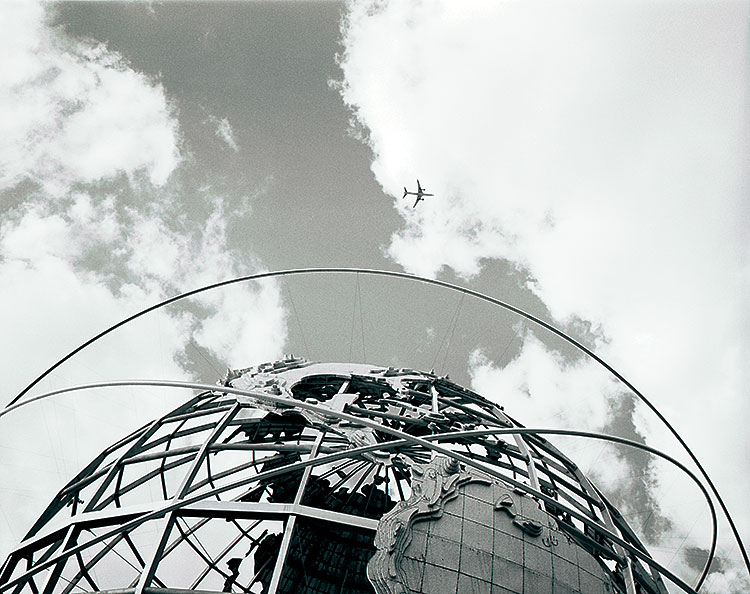 The father of war photography, Robert Capa, has finally come home. Over 3,500 negatives dating from 1936 –1939 and taken during the Spanish Civil War have been found. Thought lost during the Nazi invasion, the negatives are in surprisingly good condition. They have been transferred to the Capa Estate and are in the hands of the International Center of Photography as they decide how to archive them.
The father of war photography, Robert Capa, has finally come home. Over 3,500 negatives dating from 1936 –1939 and taken during the Spanish Civil War have been found. Thought lost during the Nazi invasion, the negatives are in surprisingly good condition. They have been transferred to the Capa Estate and are in the hands of the International Center of Photography as they decide how to archive them.
Capa, whose famous mantra was “If your pictures aren’t good enough, you’re not close enough” was never a man to hang on the sidelines. The swashbuckling photographer also created the most important photo agency of our time, Magnum.
Magnum revolutionized the Photography Industry by becoming one of the first photography agencies that let the photographers control the rights to their negatives. A standard we now take for granted.
Thanks to Tim Atherton for posting this news.
You can read the full NY Times article here.
In other news, photos by Joe Reifer and Andy Frazer were accepted into a Contemporary Night Photography exhibit titled Darkness Darkness. It opens on March 18th in Cambridge, Mass. Did I mention it is at Harvard? Congrats guys for making it in!
The show looks phenomenal, a literal Who’s Who in the Night Photography World. For a preview and more info click here.
Finally, looking for good cheap art? Check out the 20×200 online gallery.
Every Tuesday and Wednesday they feature 2 new pieces of work from two artists, one photo and one work on paper. Each image is available in 3 sizes with the smallest size being reprinted the largest batch, an edition of 200, for 20 bucks. 20×200 features a lot of new artists but as usual, good art goes quick, especially for $20.
A New Ruinism for 2008
Posted on — 1 Comment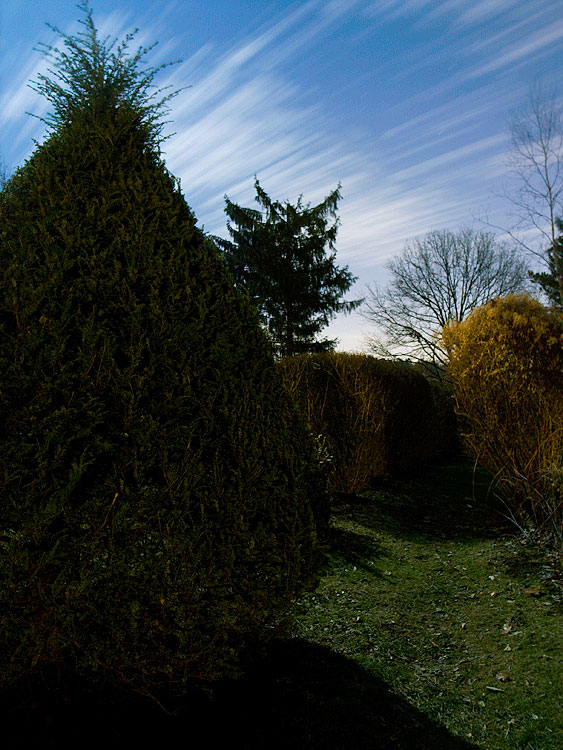 Welcome to the latest version of Ruinism!
Welcome to the latest version of Ruinism!
Sorry for the delay ~ Ruinism is now compliant with HD/BluRay/and all the latest new fandangled technology out there!
After a year of blogging I met with “my people” who met with “their people” and we decided to add a new look to the Ruinism website! The general consensus from viewers like you was bigger pictures and an easier to read background. So a wider format was created, all the sidebar links now run along the top and a switch from a black background to white for ease of reading. You can still click on all the small blog pictures to view a bigger picture!
Check out the Portfolio section, it has been totally edited and updated. It now uses a cool feature which makes viewing images in slideshow or individual format much simpler. The Portfolios are now divided into four groups: Exposures, Pinhole, Nocturnal, and Ruinism. We have also added a Shop section where you can finally purchase some of these limited edition fine art photographs online.
I’ve had a great year sharing my adventures and photos with you all in 2007. Thanks to everyone who has viewed, commented, and given feedback on the site. I’m constantly inspired by the world around us and plan to continue to share this vision with you.
This site couldn’t have happened without tech maestro Sean Thompson who has spent hours, weeks, months, and years it seems, into making sure the website is working and looking good. And of course, my wife and muse Nancy who teams up with my sister-in-law and muse, Sandy, to make sure only my finest work makes it to these pages!
We’ve got a lot planned for 2008, so sit back and enjoy the ride!
The Haugh Drive Garden photo above was taken at night during the last full moon of 2007.
~g
Sutro Baths part 2
Posted on — 3 Comments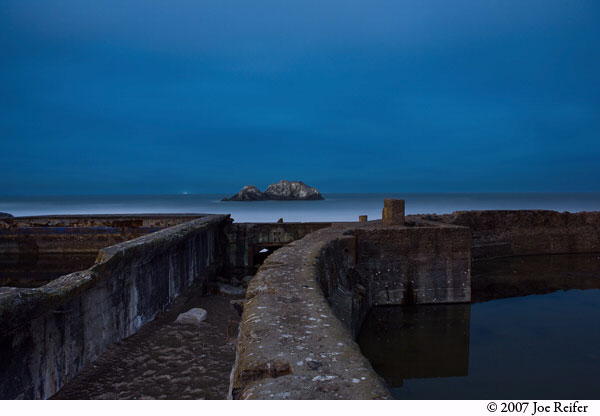 |
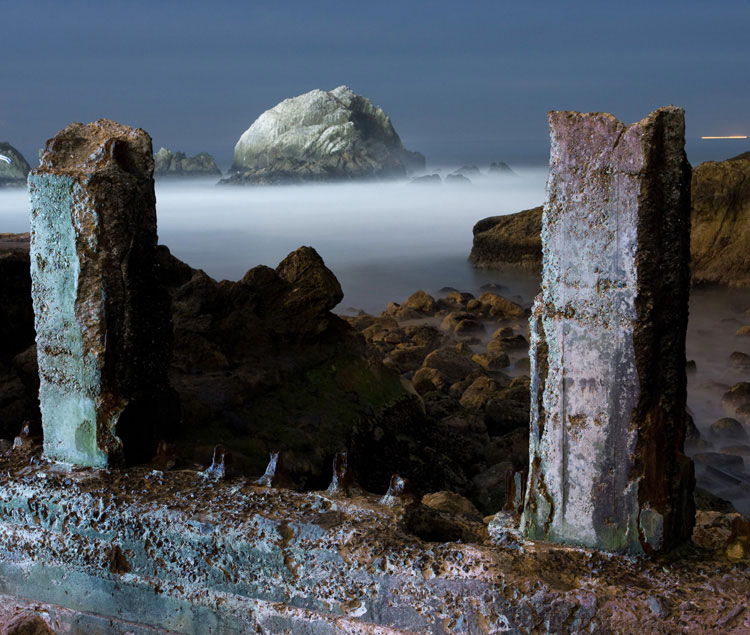 |
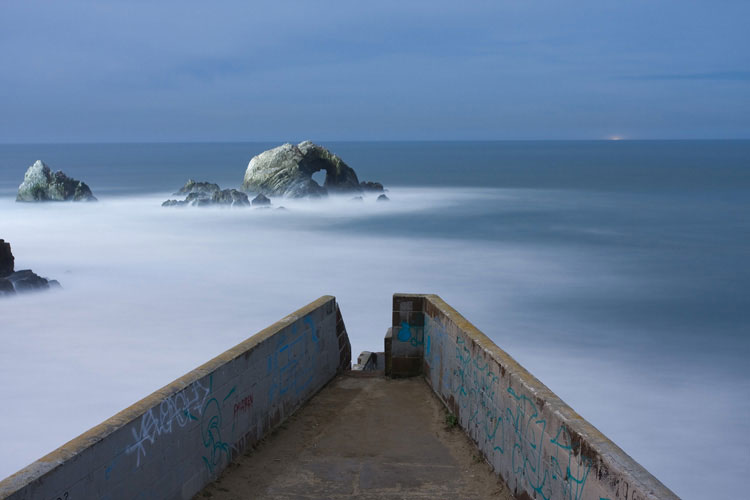 |
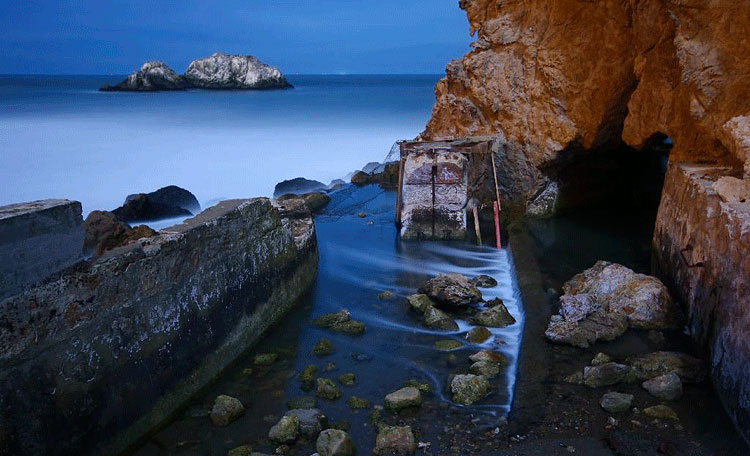 |
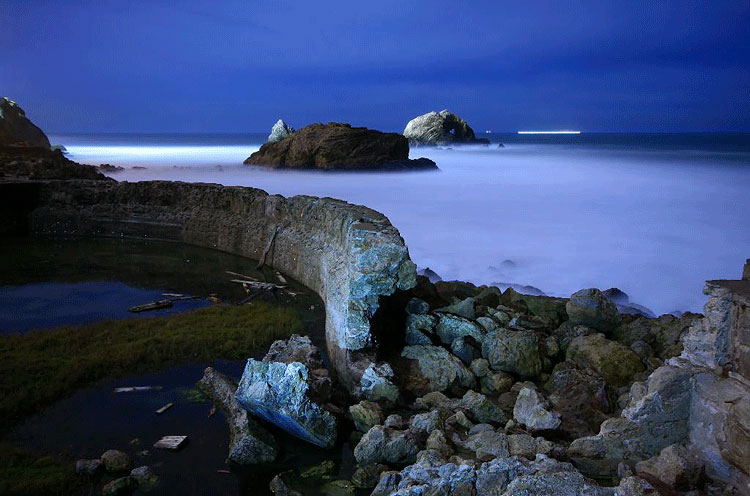 |
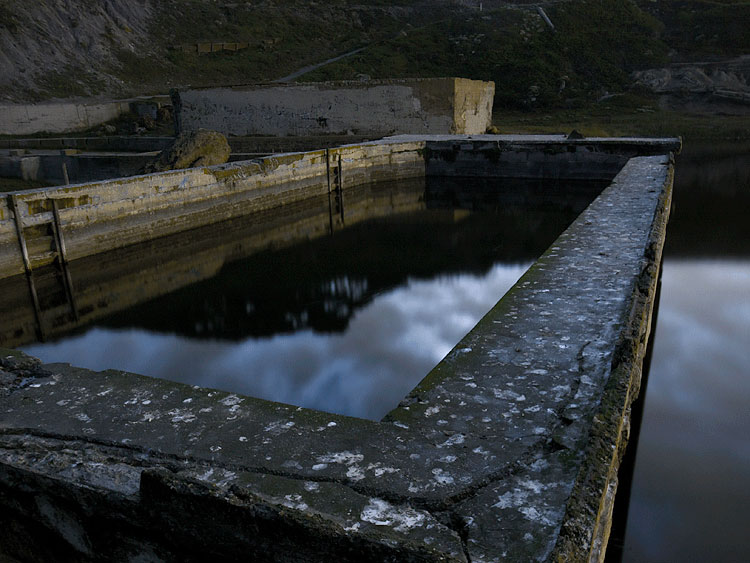 |
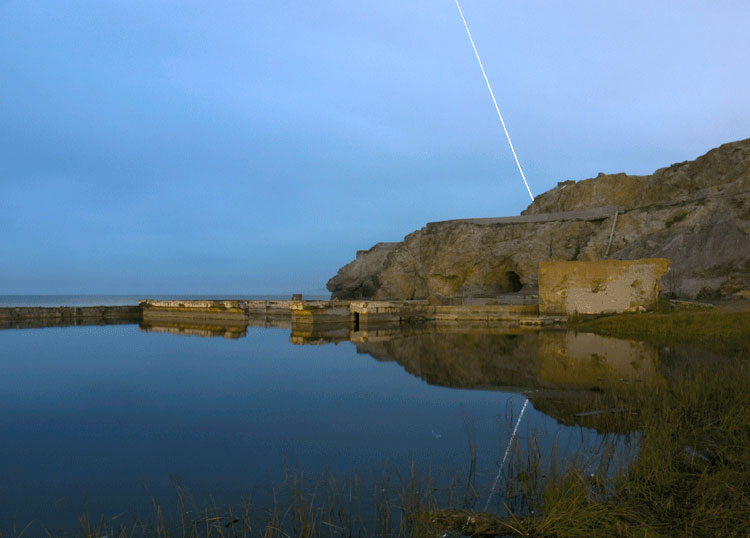 |
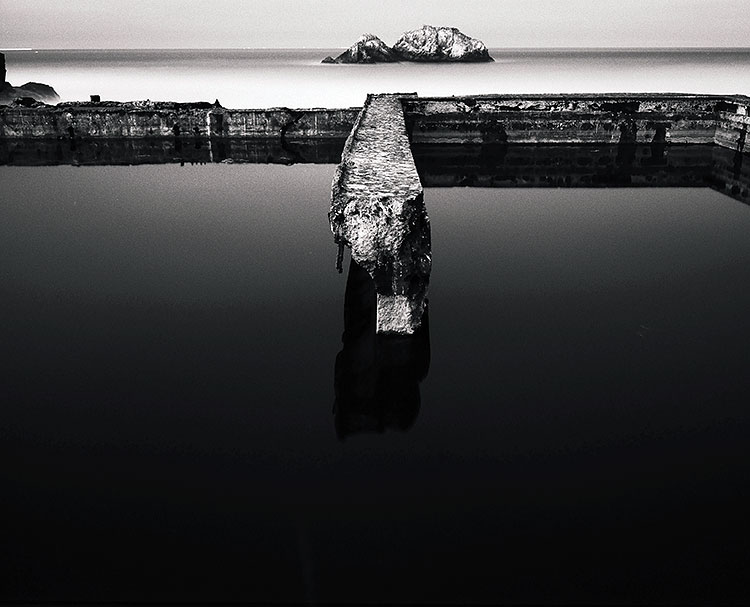 |
Modern ruins, labyrinthine structures, wind blown cypress trees clinging to the cliff, and caves and paths that lead to Land’s End; this is the Sutro Baths that I’ve been fascinated with since I was first taken to Ocean Beach as a young child.
The Sutro ruins on the outskirts of San Francisco are where we’d often take the dog hiking along the paths above or exploring the abandoned remains below. This probably set in place my future fascination for Ruinism. The Sutro Baths are no secret and have been welcoming the public and the Pacific in one way or another for over 110 years.
Built with iron, wood, and glass in the grandiose manner of London’s Crystal Palace, the grand opening to the public was held on March 14, 1896. The Industrial Age was in full swing and this engineering masterpiece had taken only 6 years to build at the cost of $1 million. It was the dream of the eccentric Adolph Sutro, who had just finished a lackluster 2 year term as San Francisco’s 24th mayor. The extravagant public bathhouse was the world’s largest indoor swimming pool at that time and was inspired by the ancient baths of Rome. Visitors to the baths had 7 different swimming pools to choose from, one freshwater and six salt water bathes, ranging in temperature from 80 degrees to sea temperature. During high tides, water would flow directly into the pools from the Pacific, recycling 2 million gallons of water in an hour. During low tides, a powerful turbine water pump, built inside a cave at sea level, could be switched on from a control room to fill the tanks at a rate of 6,000 gallons a minute. Over 20,000 swimsuits were for rent and the facility could hold over 10,000 people at a time. To see an Edison Manufacturing Co short film of the Giant Slide at the Sutro Baths from from 1897 click here.
If you preferred not to swim, the bathhouse also incorporated a museum displaying some of the finest Egyptian artifacts outside of Egypt as well as Sutro’s varied personal collection of his travels. An 8,000 person Concert Hall and an ice-skating rink were also part of the Sutro Baths.
Five hundred dressing rooms … spacious elevators and broad staircases … pavilions, balustrades, promenades, alcoves and corridors adorned with tropical plants, fountains, flowers, pictures, … the collected treasure of foreign travels… a portico with four Ionic columns and pilasters which lead to a noble staircase, wide, gradual of ascent, bordered with broad-leaved palms, the flowering pomegranate, fragrant magnolias … [touching] the very rim of the reveling waves.
However, due to the high operating and maintenance costs, the Sutro Baths closed its doors in 1966. During its demolition, a suspicious fire broke out and left the Baths in the ruins that you can see today.
What has fascinated me most is how little the ruins have changed. They are maintained by the National Park Service and very little is off limits for urban exploration.
Our “exploration” led to the photos that were taken on November 24th. It was a full moon, and my father and I met fellow nocturnalists Joe Reifer, Andy Frazer, and Shawn Peterson as the few clouds were breaking through to reveal the ruins of Sutro. We spent over 4 hours shooting, flashlights popping, and exposures being calculated. Armed with tripods, our exposures were running 2-8 minutes, with plenty of opportunity to soak in the true atmosphere of the baths. I’ve spent a lot of time at Sutro, but on a clear night with old and new friends, we explored the timeless time of Sutro.
To check out more of Joe Reifer work click here.
Andy Frazer’s blog on the night can be found here.
More of Shawn Peterson’s nightwork can is here.
To see some great photos from old Sutro Baths or read more about its history check out these sights:
Sutro Baths
Cliffhouse Project
Sutro’s
Outsidelands
Wikipedia
